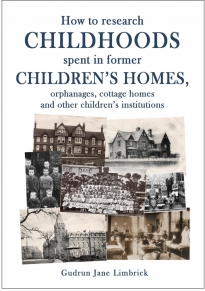| The Salvation Army and Children’s Homes
The Salvation Army was established in 1865 as the North London Mission by a Methodist minister, William Booth. William wanted to meet both the practical and spiritual needs of the poor and destitute. Although it started in England, the Salvation Army quickly began works in many other countries. One of the many types of activity the Salvation Army ran was children’s homes.
I have had great difficulty finding out about the children’s homes that the Salvation Army ran in England. I have pieced together the following but it may well include mistakes and I am sure that I have missed some homes. If you can correct anything I have written or add anything, please please let me know. I know people are searching for information about these homes and it would be really good if we could provide clear and correct information here.
Strawberry Field, Woolton, Liverpool Probably the most famous children’s home run by the Salvation Army is Strawberry Field – immortalised by the Beatles (who added an extra ‘s’ in their song title – Strawberry Fields Forever). The site was purchased by the Salvation Army in 1934 and opened as a children’s home in 1936. In the 1970s the original building was demolished and replaced with family units. It was saved from closure in 1984 reportedly by a cash donation from John Lennon’s widow, Yoko Ono (I haven’t been able to verify whether this is true or not), but finally shut in around 2005. Apparently John Lennon as a boy liked to go to the garden parties held in the Strawberry Field grounds.
Marshfield, Albert Road, Southport We have been in touch with the historian at the Salvation Army who kindly provided this history of Marshfield: "In September 1939 a former Salvation Army industrial home at Blenheim House, 101 Waterloo Street, Oldham, became a shelter for children evacuated from Merseyside. In December 1940 this group was moved to Southport and became the nucleus of Marshfield, a new ‘home for mothers and infants’ (the contemporary Salvation Army term for a maternity home) with a section for toddlers, at 37 Park Crescent. In November 1943 the maternity work closed and Marshfield became a ‘War Emergency Children’s Home’. In January 1953 the home was transferred about 300 yards, to another side of Hesketh Park, 79 Albert Road, with the name being retained. Accommodation at this site was for about forty children. Marshfield closed in 2003. Both buildings still exist; the Park Crescent site as a hotel, and Albert Road as a development of 17 flats. We hold the records from Marshfield, including any surviving personal records of the children. Former residents of Marshfield wishing to access their records should contact us at heritage@salvation army.org.uk or at the address below"
Salvation Army Maternity Home, Elmswood, North Mossley Hill Road, Liverpool This home was founded in the 1940s mostly for unmarried mothers. Once the mother had had her baby, many were adopted from the Home. Closed as a maternity home in the 1950s or 1960s and from then it seems it became a children’s home. I believe it may still have been a children’s home in the 1970s but is now an unrelated nursing home.
Florence Booth House, Clement Park, Lochee, Dundee Initially the Dundee Mothers’ and Children’s Home opened at Seafield Lodge, Magdalen Green. In 1927, the home was moved to Cidhmore, Perth Road. It was not until the following year that it finally settled in Clement Park and took on the name of Florence Booth House. In 1969,, a childrens section opened and the following year the maternity section closed leaving it as a children’s home effectively. It remained as such until 1991 when it closed. In later years, the site became a hostel for adults and was later sold for private development.
Pictures of the site can be seen here (external website).
The Nest, London This was opened in 1901 in Upper Clacton, London. It was reportedly for sexually abused girls.
An article exists on the home: Jackson, L. A. (2000), ‘Singing Birds as well as Soap Suds’: The Salvation Army's Work with Sexually Abused Girls in Edwardian England. Gender & History, 12: 107–126. doi: 10.1111/1468-0424.00173
Bow Road Boys' Home In the early 1900s, the Salvation Army took over Sturge House, Bow Road (formerly a Dr Barnardo's home) as a home for boys.
Emigration
The Salvation Army was one of the agencies which emigrated children in the late nineteenth century - from as early as 1882 and largely through the Salvation Army Emigration Board. Before World War One this was primarily to Canada, and afterwards it seems the emigration was primarily of boys to become farm workers in Australia.
LOOKING FOR RECORDS?
The Salvation Army Heritage Centre (external website) holds records of their homes:
Email: heritage@salvationarmy.org.uk
or write to: The Salvation Army International Heritage Centre William Booth College Champion Park London SE5 8BQ | ||||||










